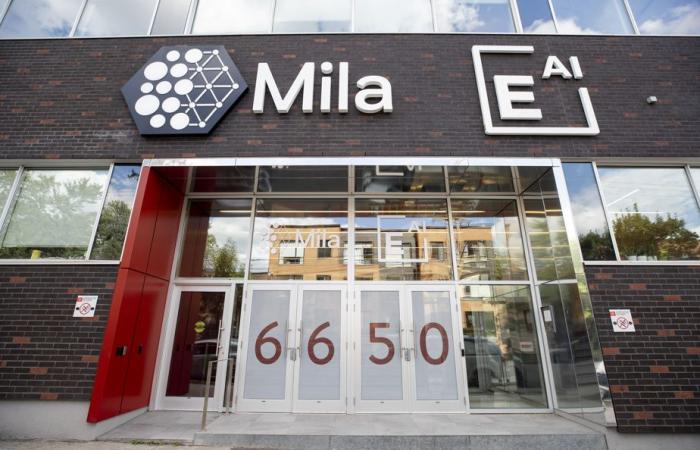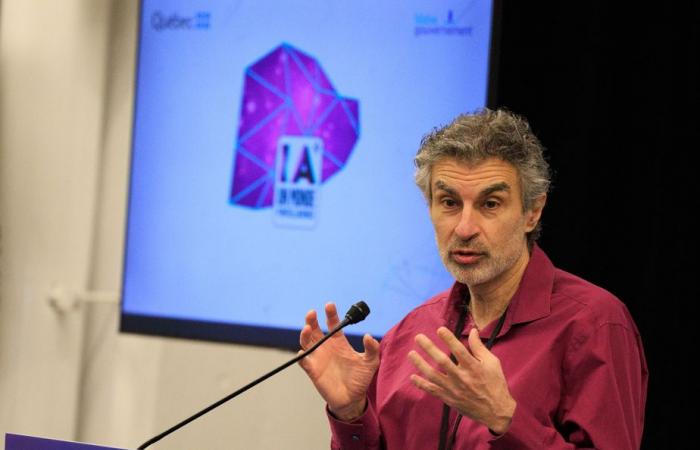Income up 30% in one year, 38 additional professors and above all 734 research projects in progress: without a doubt, Mila has “reached cruising speed” in 2024, according to its spokesperson Ludovic Soucisse.
Published at 8:00 a.m.
Seven years after its founding, the Quebec artificial intelligence institute is publishing its “impact report” this Thursday, which takes stock of the main achievements of the last year. “It’s an organization that is doing well,” summarizes Mr. Soucisse. There have been enormous growth challenges, extraordinary growth opportunities, and here, we have a community that is solid, that is stable. »
Mila is in fact a snapshot of what makes Montreal the most important university research center in artificial intelligence in the world. In 2024, there will be 159 professors, 38 more than last year, supervising 1,154 student researchers; 13 new start-ups were supported by the institute, bringing the total to 41. Mila members have published more than 700 articles and collected precisely 50,262 mentions in the media.
Funding on the rise
What further illustrates the strength of Mila, according to Mr. Soucisse, is the fact that 734 research projects are currently being carried out there, a figure up 23% over one year. These projects particularly affect health and the environment.
PHOTO HUGO-SÉBASTIEN AUBERT, LA PRESSE ARCHIVES
Researcher Yoshua Bengio contributed to the Quebec artificial intelligence institute Mila.
“It illustrates the transversality of artificial intelligence,” believes the senior director of communications and public affairs at Mila. It’s not just pure research to understand how an algorithm can improve over time, it’s increasingly becoming applied research. We see that technology and research are increasingly present in all spheres of society. »
Working in a field that has been in the news so much for two years, especially with the general public launch of ChatGPT in November 2022, is generally a guarantee of funding. This is what happened to Mila, which ended its year with revenues of 55.3 million, up 29.8% year-on-year. Nearly two thirds of this sum, 64.8% to be more precise, comes from government subsidies. The portion of “contracts with industry” represents 21% of revenues.
“It’s been a good year,” agrees Mr. Soucisse. 65% of our revenue comes from governments. And we had a very good year in terms of partnership development last year. Almost a third of our income is self-generated, which is excellent for an NPO. »
Concretely, “contracts with industry” do not provide income through the sale or design of products, specifies the spokesperson. “When there is a concrete research project with a partner, it is the partner who will pay part or all of the amount. When companies become Mila partners, they have access to our research community, they have access to our community of practice, so there are partnership fees for these companies. »
Three projects
Antenna
Carried out in collaboration with the Montreal Insectarium, Antenna aims to identify and quantify insects in their environment. With sensors combined with algorithms, solar-powered cameras that attract insects by light and photograph them. Antenna aims to provide “experts with the data necessary to inform public policies related to land use, climate change and the preservation of biodiversity”.
DROID
Large language models (LLM) like ChatGPT have been able to rely on billions of pages of text for their training. In robotics, we do not have such large datasets to learn manipulation tasks. This is the objective of the DROID project, led by the Robotics and Embodied AI Lab (REAL) at the University of Montreal, with 12 other research laboratories around the world: to produce a vast set of “diversified and high-quality” data on the manipulation of robots.
Video games
Mila and Ubisoft launched an initiative in September 2023 to “explore the responsible use of AI in scaling game worlds.” The Ubisoft-Mila Industrial Research Chair therefore wants to guide technological innovation by training experts capable of integrating AI into video games, “highly qualified personnel in areas such as reinforcement learning, learning by representation, realistic image synthesis, physics-based simulation, interactive graphics and machine learning”.







